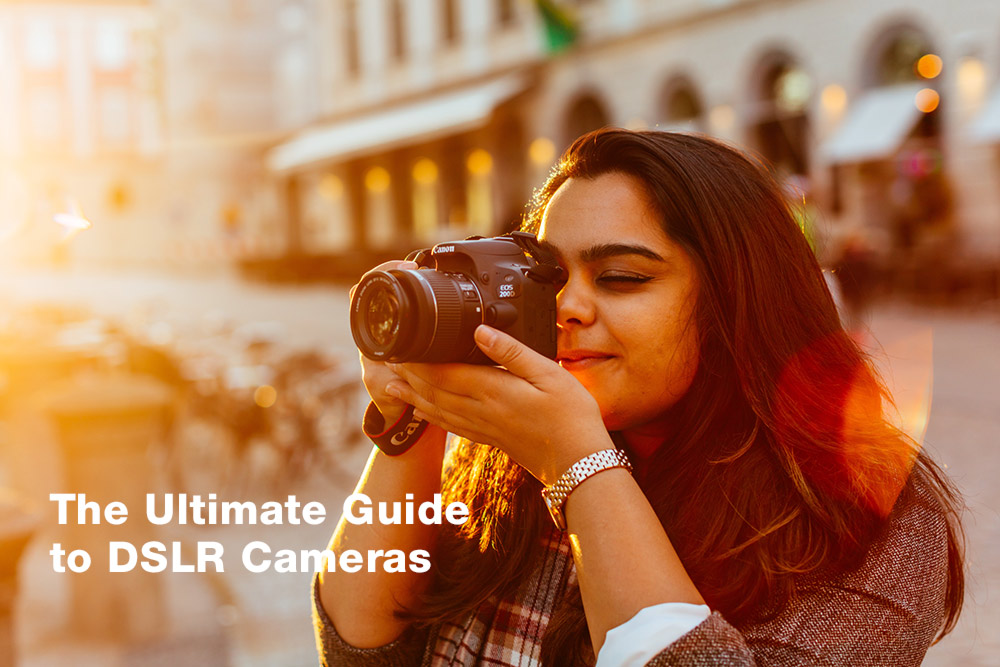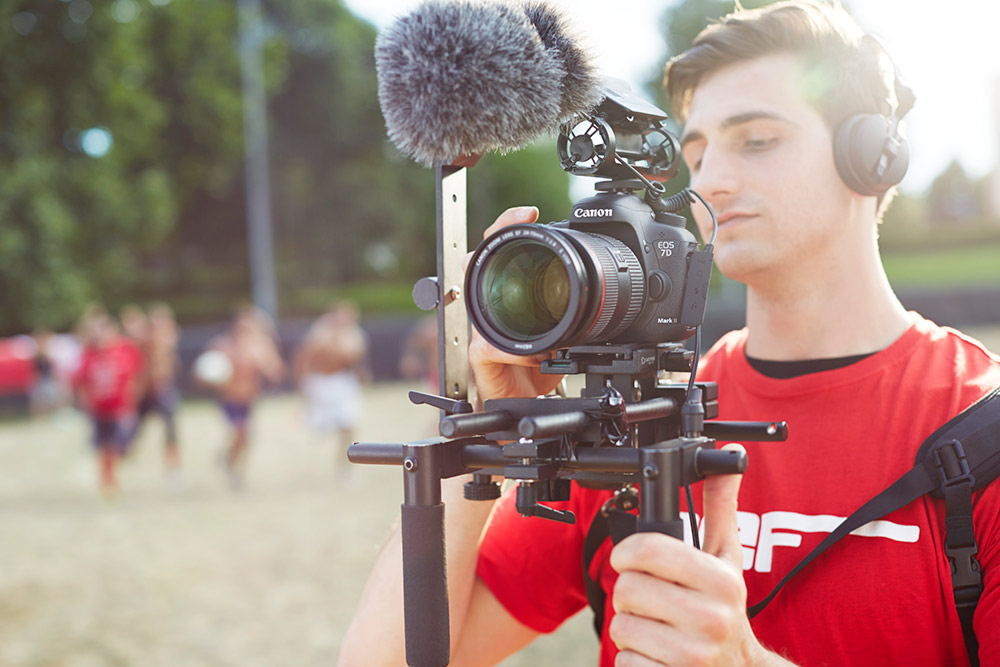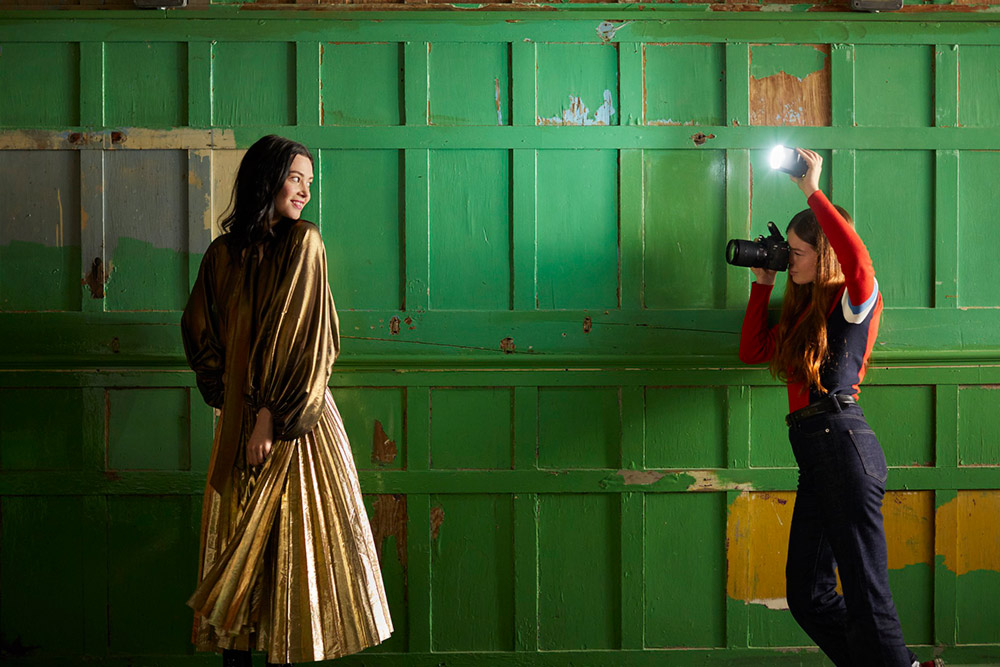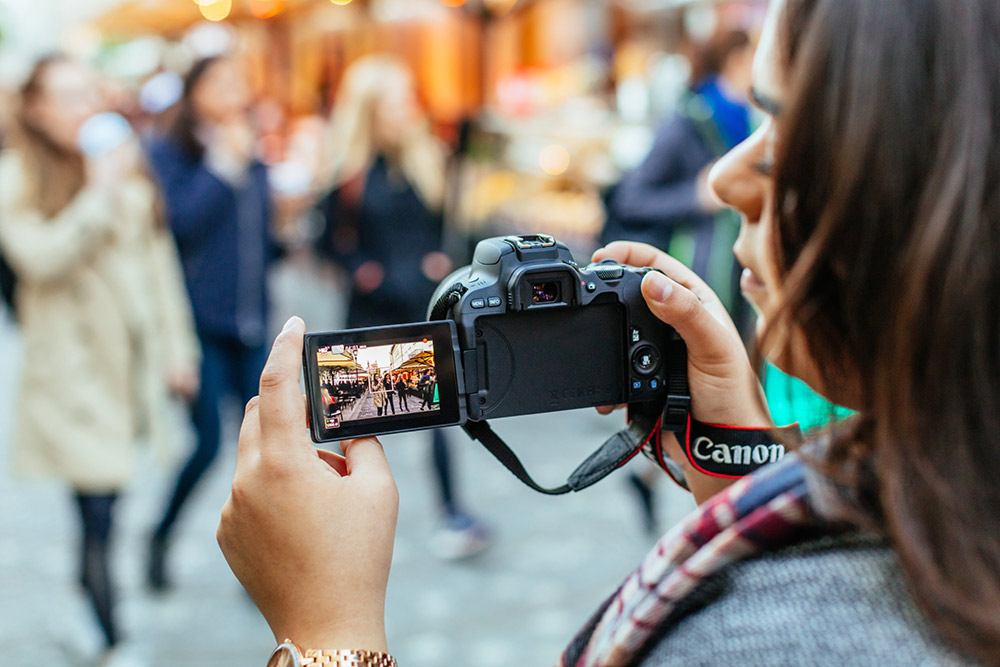- Call us: 01444 237070
- Contact Us
- Stores
- Sign In / Register
-
- Back
- Used Cameras
- Used Accessories
- Used Lenses
- Used Video
- Used Film Equipment
- Used Stock Alert
- Used Blank Test
- Sell or Part Exchange
- Used Clearance
- Recently Added Used Equipment
- Park Picks
- All Used Black Friday Deals
- Faulty
- Trade-In
- Blog
- New in
- Call us
- Contact us
- Stores
- Sign in
- Categories
- Tips & Inspiration
- Reviews
- News
- Events
- Features
- Buying Guides
- Competitions
DSLR Camera Guide
DSLR cameras have been the mainstay of both amateur and professional photographers since the early 1990s, thanks to some key benefits which they provide. There are three DSLR camera manufacturers which are industry giants - Canon, Nikon and Pentax. Each of these brands produce popular camera bodies with refined features which are perfect for photographers of any skill level.

If you're looking to learn more about DSLR cameras, we've got all the information you need so you can discover which cameras have the most powerful features, what kind of video capabilities to expect and how much to budget to ensure you get the perfect DSLR for your photography.
What is a DSLR Camera?
DSLR stands for Digital Single Lens Reflex camera, which is based on old film SLR cameras. DSLRs include a mirror and a pentaprism or optical viewfinder to preview the scene, exactly as it appears in front of you. This differs from a mirrorless camera, which has no mirror and employs an electronic viewfinder, rather than an optical one.
DSLR cameras are available with two sensor sizes. This affects the amount of light they gather, as well as the size and weight of the body and compatible DSLR lenses. Full-frame sensors are the largest, followed by slightly smaller crop sensors (APS-C).
All three DSLR brands make cameras with full-frame and APS-C format sensors, catering for different budgets and photography subjects.

How to Use a DSLR Camera
Many DSLRs cost about the same or even less than a smartphone, but are capable of taking far better pictures – even for beginners.
Although it’s well worth learning manual photography, DSLRs can take amazing photos in Aperture Priority and Shutter Priority mode. Using either of these modes gives you more control over the image and delivers better results than shooting in auto.
To get the sharpest results, make sure the shutter speed is fast enough for you to hold the camera steady and will also freeze the action if your subject is moving. When capturing a stationary portrait, you may have to shoot at 1/125sec, and for wildlife, this could be as fast as 1/2000sec, depending on the bird or animal.
A tripod allows you to shoot at slower shutter speeds and still get sharp results, particularly when capturing landscapes or street photography during low light. However, a DSLR with body stabilisation will help you achieve sharper results in lower light without the need for a tripod.
Shooting RAW instead of JPEG provides far greater control when editing your photos, which can help to set your work apart from other images on social media. When editing a RAW file, you can adjust white balance, saturation and other elements, which the camera controls.

Can you Shoot Video with a DSLR Camera?
Many DSLRs are capable of recording video in fantastic quality, particularly when paired with any of the vast range of competent DSLR lenses or specific cinema lenses, which create beautifully cinematic results.
HD video (High Definition) is more common in entry-level DSLRs, whilst 4K is typically found in intermediate or advanced cameras, making this a key consideration when choosing a DSLR body for moviemaking.
A huge range of video accessories are compatible with DSLRs, including on-camera microphones, gimbals and external monitor/recorders, which all help to take your video productions to the next level.

Which is the Best DSLR Camera?
When you're investing in a new DSLR camera, it's important to ensure you choose one that includes all of the key features you require, whilst sticking to your budget and whether to buy used camera equipment as a means of saving some money.
Features to Look Out For in DSLR Cameras
When it comes to shopping for DSLR cameras, it’s important to recognise the key features to look out for, such as:
- Autofocus speed and high-speed continuous shooting - These are critical features if you want to capture fast-moving subjects such as sports and wildlife.
- Video capabilities – this is an important consideration if you’re interested in shooting movies.. Consider whether you need 4K or want to connect an external microphone, in which case a more advanced DSLR could be justified.
- Low light performance – this will come in handy for particular subjects such as astro, wildlife and street photography. If a camera performs well in low light, you’ll have a higher chance of capturing that winning shot.
- Size, weight and portability - these are key features to look out for if you intend to travel with a camera or hike long distances to your destinations.
- Ease of use - this is important when you’re a beginner so you can head straight out and enjoy taking photos without a steep learning curve.
There are plenty of great models to choose from, which offer a combination of these features at various price points and to suit any budget.

Which is the Best Budget DSLR Camera?
A budget DSLR is a good option for students and beginners trying photography for the first time, as well as for professionals who need a backup camera body.
There are several great budget choices to consider, such as the Canon EOS 2000D, which captures 24 megapixel images and HD movies, yet costs just over £500. If your budget will stretch to £800, the Pentax K-70 is a brilliant DSLR, which offers advanced features such as shake reduction, fast Hybrid AF and superb low-light performance.
A second-hand camera can save you even more, with many available in lightly or barely used condition. One of the best used cameras is a used Nikon D3S, which can be found from around £340.00 and gets you Nikon’s flagship technology from a handful of years ago. You’ll need to budget for a separate Nikon DSLR lens, but there are plenty of affordable options for every style of photography imaginable.
It’s easy to appreciate why DSLR cameras are still so popular. They tend to be rugged, durable, and come with great features for both photography and videography. With this new-found understanding, why not browse our comprehensive range of DSLR cameras and pinpoint the best one to capture amazing photos and videos for your audience?
Share this post:
By Park Cameras on 20/09/2022

Trade in your old equipment
Fast and easy trade in service ensures your old gear is collected efficiently and you are paid quickly! It's very simple to trade in your unwanted photography gear. Just head over to our dedicated Sell or Part Exchange page, fill out the details, and we'll get back to you with an offer for your old gear. Take the cash, or put it towards the cost of your new gear. It's up to you! Find out more
sign up to the newsletter
Keep up to date on the latest photography news, events and offers. Sign up now
